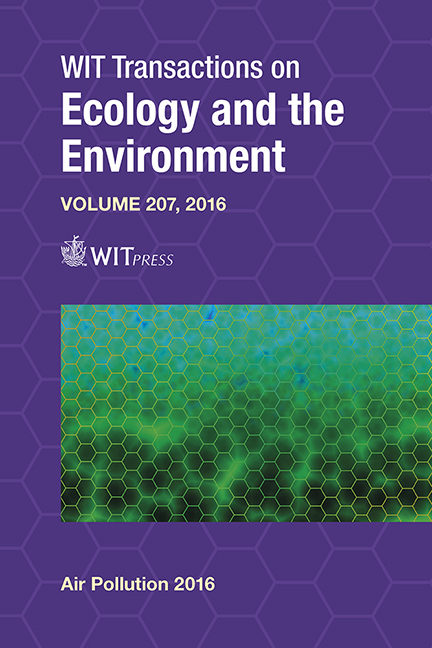Relationship Between Quality Of Ambient Air And Respiratory Diseases In The Polish Population
Price
Free (open access)
Transaction
Volume
207
Pages
8
Page Range
195 - 202
Published
2016
Size
307 kb
Paper DOI
10.2495/AIR160181
Copyright
WIT Press
Author(s)
M. Kowalska
Abstract
In Poland, after the political and economic changes in the early 90s, the quality of environment, including quality of ambient air, became one of the national target priorities. We observe significant progress in improving the quality of air, however periodically (especially in the autumn–winter season) concentrations of fine particles were systematically exceeding the approved levels.
The aim of this paper was to present the efforts that have been taken to improve the health status of population living in Silesian voivodeship in the south part of Poland, in terms of respiratory diseases. In order to achieve this goal, we collected results of research conducted in the region, and next we compared own observations with other data.
Obtained results suggest that the population in Poland, especially inhabitants of the south part of the country: Silesian voivodeship and Krakow city, are still exposed to a higher concentration of particulate matter and BaP (particularly in the cold season). Those observation is consistent with data published by European Environment Agency. On the other hand, a lot of evidence confirmed that respiratory disorders, including premature mortality, acute bronchopulmonary infection in children, emergency room visits due to asthma, are related to those exposures. It is hoped that two important laws: the Public Health Act and Anti-smog act (adopted in the current year) will become an ally in activities aimed at improving the health of the population in Poland.
The urgent task of epidemiologists is to provide scientific evidence that will help to take effective improvement action, including educational activities among officials, health workers and the whole community. Only a conscious and well-informed society is willing to accept difficult decisions designed to bear the costs related to risk reduction and improving the quality of the environment.
Keywords
ambient air pollution, respiratory diseases, public health





